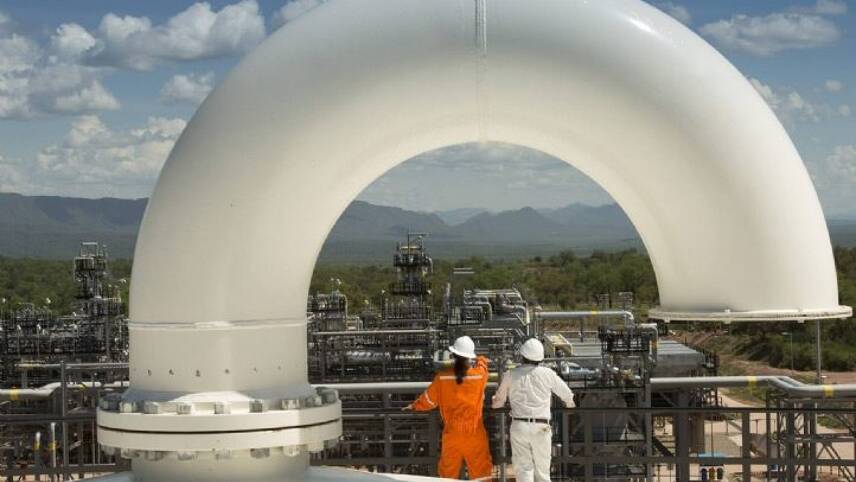Register for free and continue reading
Join our growing army of changemakers and get unlimited access to our premium content

Pictured: Researchers at the Sustainable Gas Institute (SGI) testing a small-scale CCS prototype in 2018
That is the key conclusion of a major new analysis from the International Energy Agency entitled ‘CCUS in Clean Energy Transitions’.
The analysis reveals that plans for more than 30 commercial-scale CCUS projects have been announced since the start of 2017. In 2017, projects nearing a final investment decision represented an estimated potential investment of $13bn. That figure now stands at $27bn.
While acknowledging this progress, the paper concludes that capacity deployment must be 50% higher than currently predicted trajectories if the world is the reach net-zero by 2050. Particular opportunities for deployment exist in heavy industrial sectors, which account for one-fifth of man-made greenhouse gas (GHG) emissions worldwide each year.
“CCUS is virtually the only technology solution for deep emissions reductions from cement production,” the report states. “It is also the most cost-effective approach in many regions to curb emissions in iron, steel and chemical manufacturing.”
Hydrogen production facilities which rely on fossil-based processes would also benefit from equipping CCUS, particularly if they are based in regions where fossil fuel prices will continue to be lower than those of renewables in the long-term. The IEA foresees 520 megatonnes of low-carbon hydrogen production annually by 2070, with 60% accounted for by renewables and the remaining 40% attributable to fossil-based facilities with co-located CCUS arrays.
Some 70% of the emissions generated from the power and heavy industrial sectors across Europe, China and the US are within 100km of sites with potential to host CCUS. But for the full climate and economic benefits of CCUS to be realised, the report concludes, captured carbon must be used to help decarbonise sectors such as synthetic fuels. In turn, this will help sectors such as aviation and shipping to align with climate targets.
“Action from governments will be essential for establishing a sustainable and viable market for CCUS,” the IEA’s executive director Dr Fatih Birol said. “But industry must also embrace the opportunity. No sector will be unaffected by clean energy transitions – and for some, including heavy industry, the value of CCUS is inescapable.”
The report concludes by outlining four high-level priorities for policymakers and business: placing a value on reducing emissions (for example, via carbon pricing) and increasing direct financial support for early CCUS projects; coordinate planning and development rules for industrial hubs with shared CCUS infrastructure; conduct site-specific assessments to identify and encourage CCUS in key regions and boost innovation in hard-to-abate sectors.
The IEA has notably maintained that the majority of emissions reductions needed to meet net-zero will be delivered by technologies which have not yet reached commercial maturity, including CCUS. This stance stands in contrast to that held by Project Drawdown, which has repeatedly concluded that the majority of emissions reductions needed to deliver a net-zero world can be delivered using existing, established technologies and practices.
The UK picture
The report from the IEA comes shortly after UK Prime Minister Boris Johnson delivered a speech in which he said that he is a “complete evangelist” for CCUS.
Addressing world leaders at a virtual climate action roundtable convened by the UN late last week, Johnson said that he once “barely believed [CCUS] was possible” but now wants the UK to “lead” on its deployment. He said that his Government wants to use CCUS to “develop a lot of hydrogen” “for trucks, trains and even perhaps for planes”.
Under Theresa May, BEIS made a commitment to bring at least one commercial-scale CCUS array online by 2025. Humber’s net-zero cluster, which is currently being co-developed by Equinor, Drax and the National Grid, is likely to be the winner of this race. The UK’s largest facility at present is located at Drax’s biomass and coal power plant in Selby, North Yorkshire.
If the Government is to meet its CCUS-related commitments, however, BEIS must work with other departments to develop a “comprehensive regulatory framework” that specifically focuses on challenges to “dispersed” sites that aren’t located in industrial clusters. That is according to recent research by Element Energy, commissioned by BEIS.
Moreover, some critics believe the Government is over-reliant on CCUS to the point that it is neglecting support for sectors such as onshore wind, solar and low-carbon heat and failing to address potential challenges. The Government’s own Committee on Climate Change (CCC) has stated that CCUS and hydrogen will play “non-optional” roles in the transition to net-zero. However, it sees greater emissions reductions possibilities from scaling up renewable electricity generation, electrifying heat, reforming land use and introducing caps on things like aviation and red meat production.
Sarah George


Please login or Register to leave a comment.